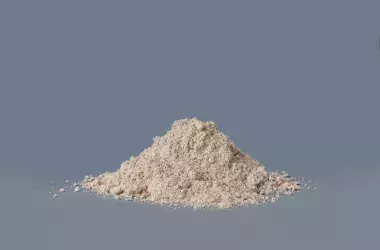Dolime

What is Dolime?
Dolime, also known as dolomitic lime or burnt dolomite, is a material produced by calcining dolomitic limestone. This process involves heating the dolomite to high temperatures, which results in a chemical transformation. The main constituents of dolime are calcium oxide (CaO) and magnesium oxide (MgO).
We distinguish between soft-burnt dolomite and hard-burnt dolomite based on their calcining techniques and resulting properties:
Soft-burnt dolime:
- Calcining temperature: Lower and more consistent temperature.
- Properties: High porosity and high chemical reactivity.
- Applications: Certain chemical processes where high reactivity is required.
Hard-burnt dolime:
- Calcining temperature: Higher temperature, for a longer duration.
- Properties: Denser, less reactive.
- Applications: Ideal for uses that demand a more stable and less reactive material, like in refractory products.
Properties of dolime:
- Appearance: Typically white or grayish-white
- Chemical Formula: CaO.MgO
- Melting Point: Approximately 2,400°C (4,352°F).
- Density: Around 3.3 g/cm3.
- Solubility: Reacts with excess of water to form calcium hydroxide and magnesium hydroxide, and finally around 1.4 g/L.
Applications of dolime:
Dolime, or dolomitic lime, has a variety of applications across different industries due to its chemical properties. Here are some of its primary uses:
- Steel manufacturing: Used as a fluxing agent to remove impurities during the production of steel, and also to protect the refractories.
- Glass production: Helps in the manufacturing of glass by acting as a source of magnesium, which improves the durability and clarity of the glass.
- Water treatment: Used to soften water and adjust its pH levels, making it suitable for drinking and industrial use.
- Construction: Applied in the production of refractory materials, which are essential for lining furnaces, kilns, and incinerators.
- Agriculture: Acts as a liming material to neutralize acidic soils and provide essential nutrients like calcium and magnesium.
Lhoist’s brands for dolime are: Dolofrit®, Doloram®, Calexor®, and more.
Frequently Asked Questions (FAQs)
What is the difference between soft-burnt and hard-burnt dolime?
Soft-burnt dolime is calcined at a lower, consistent temperature, making it highly porous and reactive, suitable for chemical processes. Hard-burnt dolime is calcined at higher temperatures for a longer duration, resulting in a denser and less reactive material ideal for refractory products.
What properties of dolime make it suitable for refractory materials?
Hard-burnt dolime’s density and stability make it an excellent material for producing refractory products used in lining furnaces, kilns, and incinerators.
What happens when dolime reacts with water?
When dolime reacts with excess of water, it forms calcium hydroxide and magnesium hydroxide, which are used in various applications such as water treatment and chemical processes.